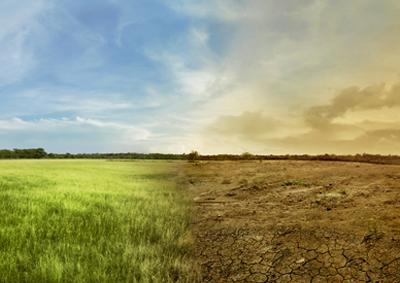TERI recommends action points to reverse land degradation in India

India has committed to restore 26 million hectares by 2030. Nearly, one third of the country’s area i.e. 96.4 million hectares is currently under land degradation. India has several sectoral policies in place; however, land degradation is a national issue affecting all ecosystems and land uses. Therefore, we urgently require a land use policy that integrates various sectors, ministries, departments and ecosystems (including forests, wetlands, croplands and grasslands) and to have a common vision for restoring land in India.
For India to achieve land degradation neutrality (LDN) by 2030, The Energy and Resources Institute (TERI) recommends the following action points:
Assessing the problem:
- Clear estimates of the areal extent of degraded areas across various ecosystems and land use is required a) to assess the efficacy of on-going reclamation programmes, b) to give successful policy prescriptions, c) to get an accurate picture of the actual costs of land degradation in the country.
- Separate atlases and policies for grasslands and wetlands of India are clearly warranted to address issues, such as frequent misclassification of grasslands as forests. Moreover, wetlands need to be added to the official nine category-land use classification of the country.
Forests and agroforestry
- An action plan to become land-degradation neutral by 2030 must address the critical issue of reducing forest dependence for fuelwood, fodder and non-timber forest products.
- A major focus for reducing forest degradation is encouraging rural households dependent on forests to switch to alternative fuel sources or at the minimum utilise fuel-efficient devices.
- Landscape-based treatment of catchments and extending tree cover outside forests a) to help India’s goal of sequestering an additional 2.5-3 billion tonnes of CO2 equivalent through additional forest and tree cover by 2030, b) to help meet the timber needs of the country and enhancing ecological, employment and food security.
- Since forests are on the concurrent list with actions taken by the States for their management, detailed guidelines from the Centre are required to help set each state’s targets to achieve India’s Forestry NDCs by 2030. Furthermore, India urgently needs to develop a carbon neutrality policy that will help drive carbon markets in the forestry sector.
- Agroforestry needs to be made an economically viable option through policy and institutional interventions such as R&D, development and provision of quality planting material and nursery accreditation, price support instruments and mechanisms, transport and marketing infrastructure in remote areas, monitoring, certification and review processes.
- Some of the punitive transit rules for movement of wood, as well as the development of local markets, need a relook.
- Most importantly, Minimum Support Prices must be put into place to counter market failure and address the role of agroforestry systems in carbon sequestration so that farmers have an incentive to grow more trees for their economic benefit.
Agriculture
- Need for an explicit focus on rainfed areas, fragile ecosystems, problem soils, common pool resources (CPRs) and drylands: Government has created a National Rainfed Areas Authority (NRAA) in 2006 with the mandate of networking and coordination with the key Ministries of Agriculture & Farmers Welfare, Rural Development, Water Resources, Environment & Forests and Panchayati Raj. The NRAA needs to be a key stakeholder in all programmes addressing land degradation.
- The pricing of agricultural inputs and outputs must be rationalized in order to ensure food security, nutritional balance, and equitable prosperity of farmers in India.
- A closer look at subsidies as well as strengthening and promoting existing initiatives such as soil cards, micro-irrigation, and crop diversification are important.
Integrated Watershed Management approach for restoration of degraded lands
- India has developed an 'Integrated Watershed Management' approach based on experience of working on soil and water conservation for over 60 years. Watershed Approach is a participatory way to treat catchment areas through soil and water conservation measures, enhancing land productivity through afforestation and improved agriculture and livestock management. And thus, provides livelihood opportunities for the local communities.
- The watershed approach helps directly achieve 10 Sustainable Development Goals on poverty reduction, climate action, food security, gender equity, employment as well as sustainable forest management. Thus, demonstrates the co-benefits of efforts for restoring the degraded lands.
On September 11 and 12, TERI held two side events at the COP14. Read complete proceedings of both events here:
- UNCCD COP 14 Side Event on: Achieving land degradation neutrality by 2030 to ensure food security, land resilience and climate mitigation, held on 11th September, 2019. View Proceedings
- UNCCD COP 14 Side Event on: Watershed Approach of Land Resource Management; a tool to achieve Sustainable Development Goals, held on 12th September, 2019. View Proceedings
